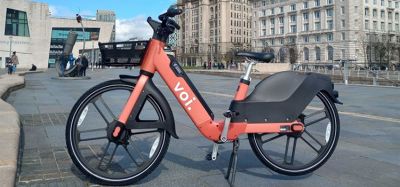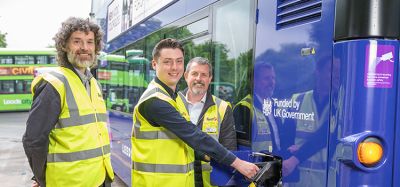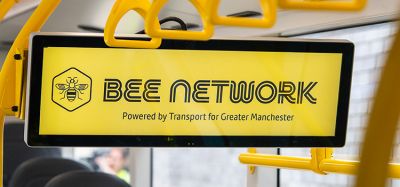Uber commits to become a zero-emissions mobility platform
- Like
- Digg
- Del
- Tumblr
- VKontakte
- Buffer
- Love This
- Odnoklassniki
- Meneame
- Blogger
- Amazon
- Yahoo Mail
- Gmail
- AOL
- Newsvine
- HackerNews
- Evernote
- MySpace
- Mail.ru
- Viadeo
- Line
- Comments
- Yummly
- SMS
- Viber
- Telegram
- Subscribe
- Skype
- Facebook Messenger
- Kakao
- LiveJournal
- Yammer
- Edgar
- Fintel
- Mix
- Instapaper
- Copy Link
Posted: 8 September 2020 | Sam Mehmet (Intelligent Transport)
Uber stated that, by 2040, 100 per cent of journeys in 10,000 cities will take place in zero-emission vehicles, public transit and micromobility.
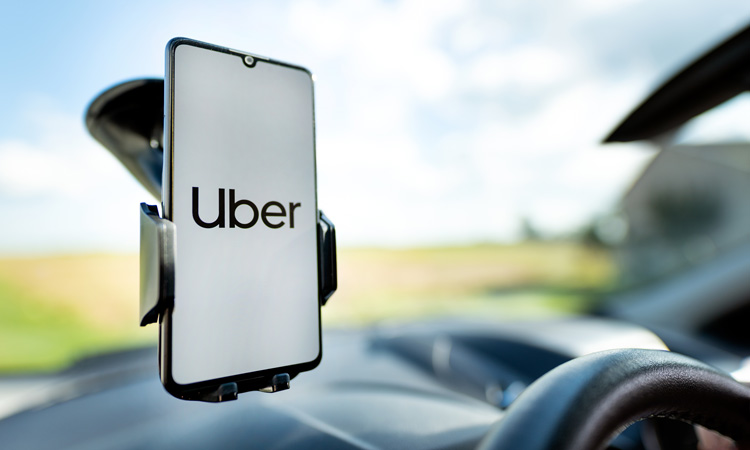

Uber has committed to becoming a zero-emissions mobility platform by 2040 across 10,000 cities in six continents. By 2025, the firm said that 50 per cent of kilometres driven on Uber’s platform in aggregate across seven European capitals (Amsterdam, Berlin, Brussels, Lisbon, London, Madrid and Paris) will be in zero-emission vehicles.
This will reportedly be achieved with the help of the $800 million which is available to hundreds of thousands of drivers across Europe, the U.S. and Canada to help them with the cost of switching to a zero-emission vehicle.
Uber will also continue the expansion of Uber Green across Europe – where riders can request a lower emission vehicle for a small surcharge – from 37 cities currently to 60 cities by the end of 2021, covering 80 per cent of its European business.
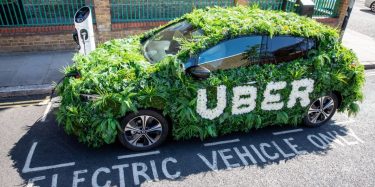

Credit: Uber
Anabel Diaz, Regional General Manager for EMEA, Uber, said: “As the largest mobility platform in Europe, we have an important role to play in tackling climate change and supporting a green recovery. With our responsibilities to drivers, riders and cities in mind, today we have made a series of ambitious commitments to help advance the electrification of our platform across Europe. As we set out our roadmap to become a zero-emission mobility platform by 2040, Europe will lead the way by delivering impactful changes in the next five years.”
William Todts, Executive Director, Transport and Environment (T&E), added: “People across Europe are sick of pollution and congestion. Shared electric mobility is key to solving these problems. And the right place to start is with high-mileage drivers who’ll benefit first from cheaper-to-run, clean electric vehicles. Uber’s commitment to rapidly electrify its fleet in major European cities is good news. Now it’s time for Europe’s majors to show leadership. We need all major cities in Europe to introduce zero-emission zones, new pop-up bike lanes and cycle-only corridors, whilst providing easy access to charging, at home, at work and wherever people park.”
Uber has also struck a number of industry-first projects in a bid to to make it easier and more affordable for drivers to switch to zero emission vehicles:
- Renault, Nissan and Uber have signed a strategic partnership to ensure drivers on the Uber App have access to affordable electric vehicles in Europe, including the UK, France, Netherlands and Portugal
- Power Dot will also provide exclusive access to four charging hubs to drivers in Greater Paris and Portugal, as well as a 20 per cent discount
- In the UK, Uber and bp have signed a deal to provide drivers with new dedicated charging hubs in London. Uber Pro drivers will also get up to 50 per cent off BP’s Polar Plus monthly membership, unlocking discounts on BP Chargemaster’s Polar network of 7,000+ charging points
- In France, a partnership with EDF will provide discounts to a large network of rapid charging infrastructure on routes across France, as well as discounts for home-charging installation.
Christoph Wolff, Member of Executive Committee, World Economic Forum, said: “As a company that enables shared mobility, Uber’s commitment to carbon reduction highlights the importance of private sector companies in the global fight against climate change, and the need for innovative partnerships between companies and public agencies to tangibly confront some of our greatest challenges.”
Maria Tsavachidis, CEO of EIT Urban Mobility, said: “Technologies and solutions for clean, connected and shared mobility already exist but we need to integrate them, and accelerate implementation and scaling. Electrification and shared mobility are key for sustainable urban mobility, so we support Uber’s efforts and ambition to commit significant resources to the transition of electrification of its fleet and bringing together different key-players to cooperate.”
Related topics
Alternative Power, Fleet Management & Maintenance, Mobility Services, Sustainable Urban Transport
Related organisations
Uber
Related people
Anabel Diaz, Christoph Wolff, Maria Tsavachidis, William Todts




